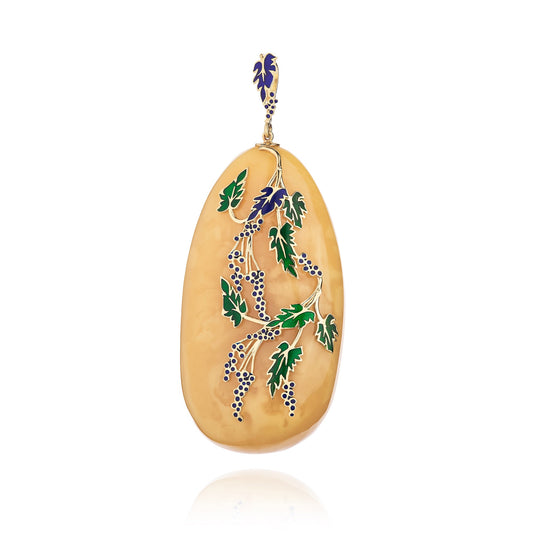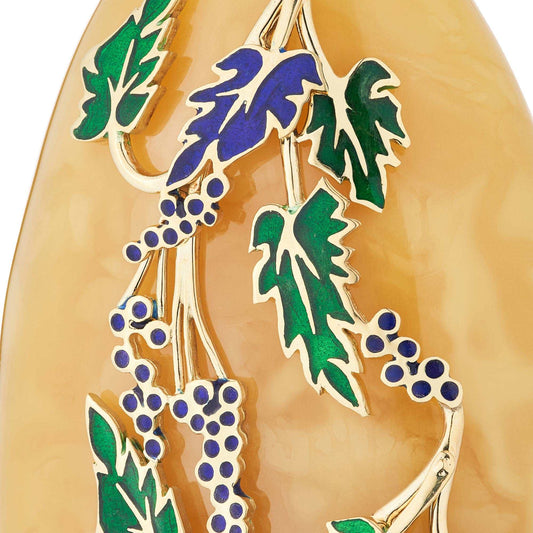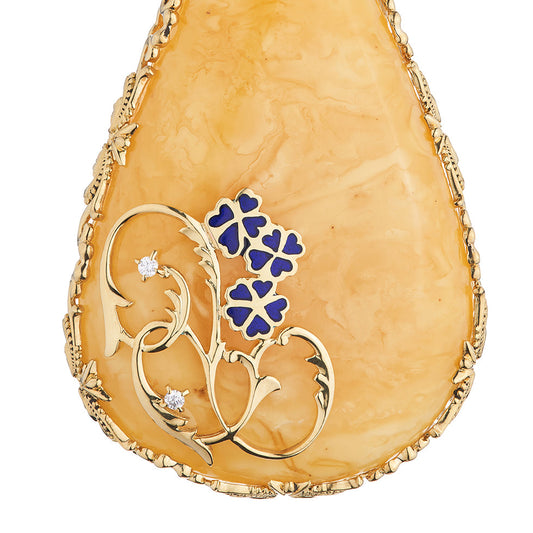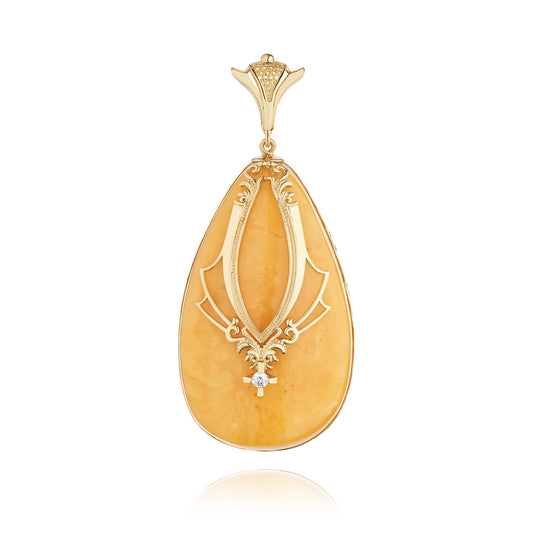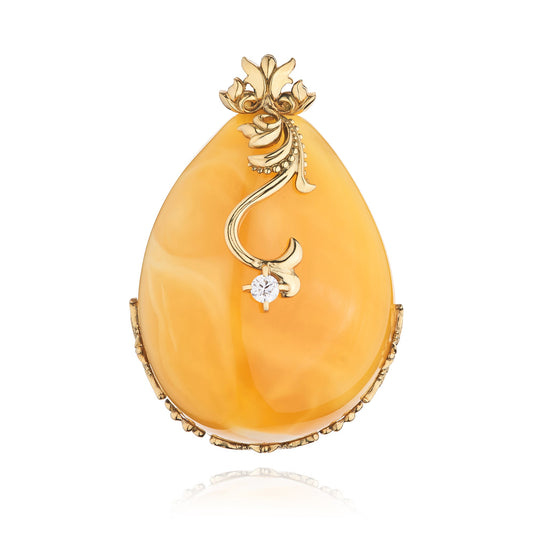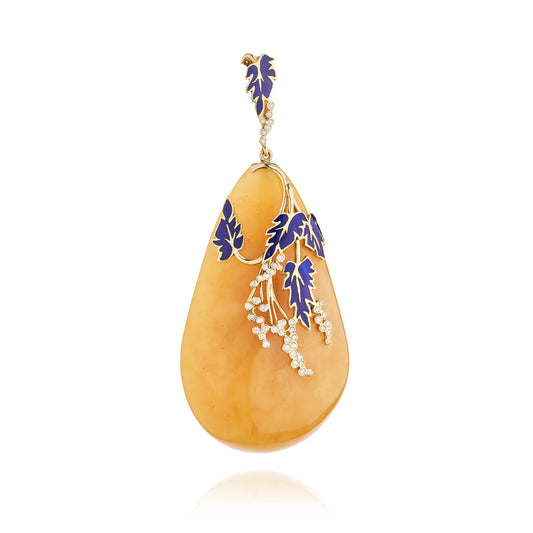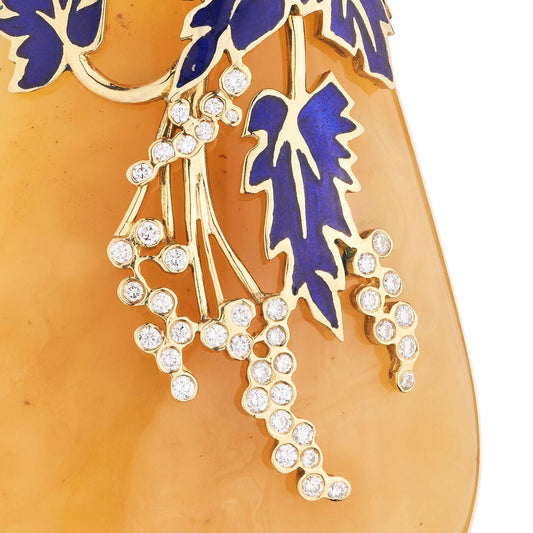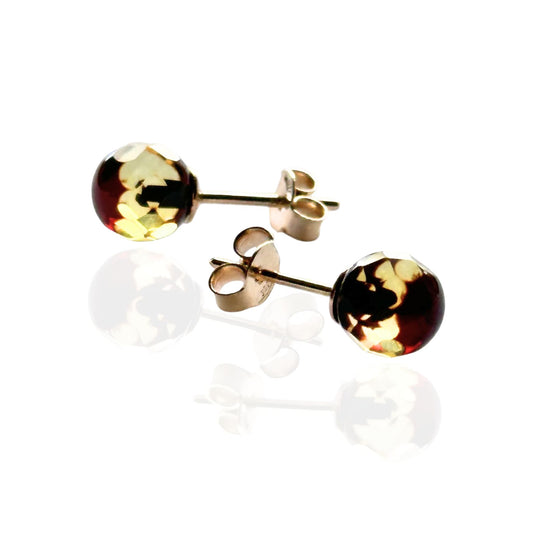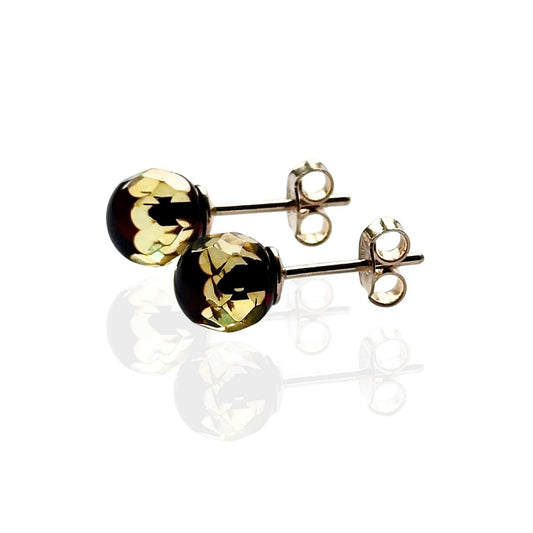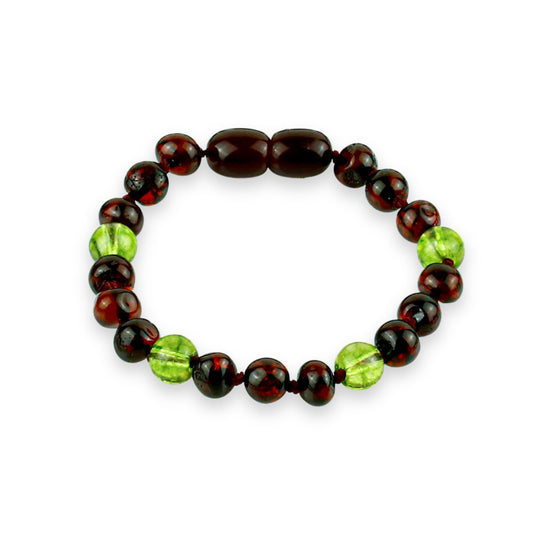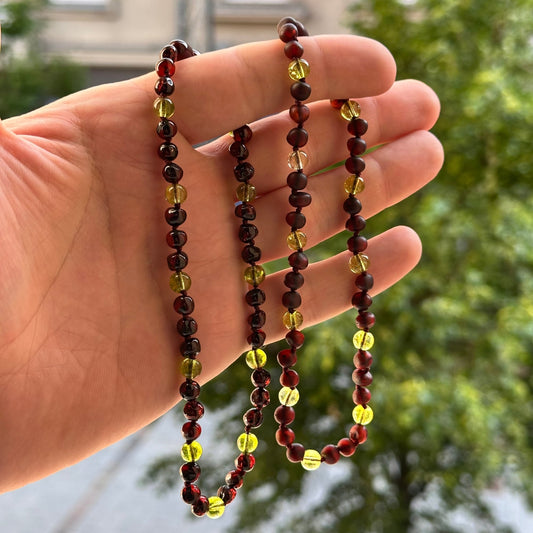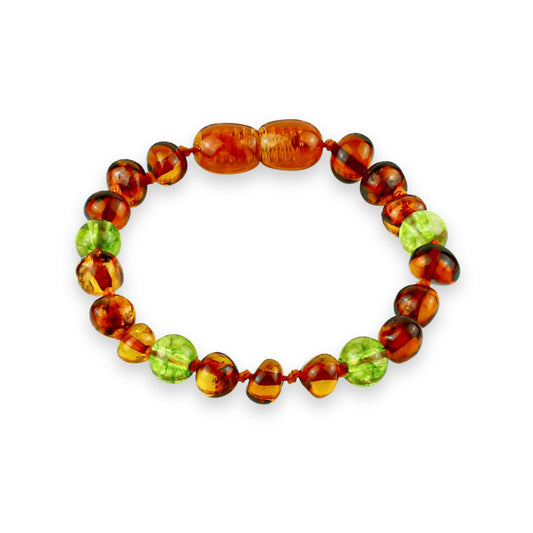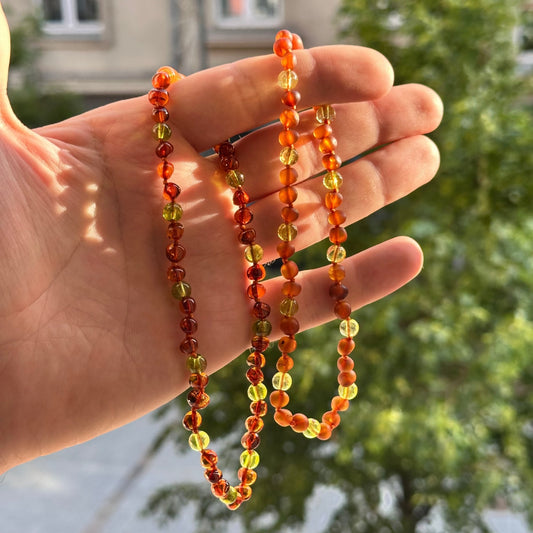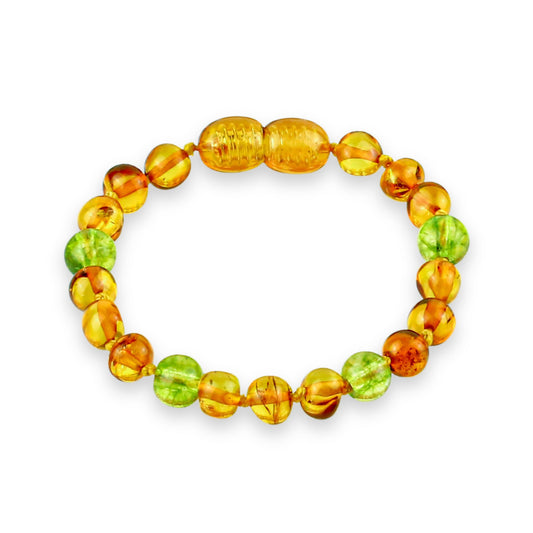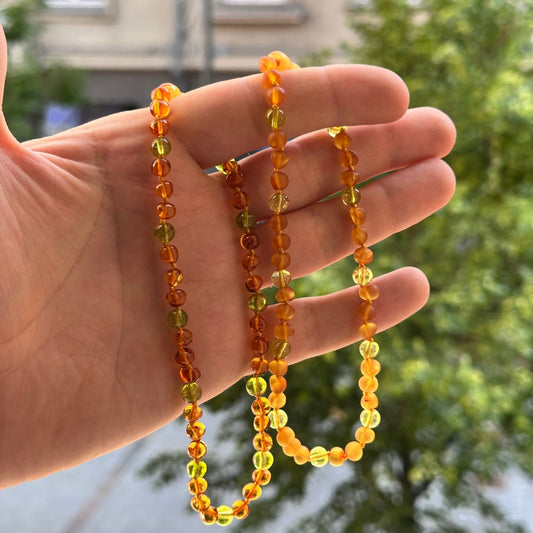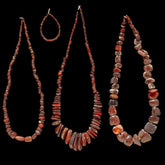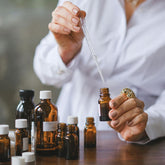Amber and its health benefits
by
Tairis Jasaitis
28 Mar 2025
Baltic amber has been valued since ancient times not only as a piece of jewelry, but also as a healing agent. Its unique properties have been used in various cultures, and today the therapeutic powers of amber are still attracting attention.
Chemical composition of amber and its effects
Amber is a hardened derivative of coniferous tree resins, in which succinic acid is found. This organic substance has anti-inflammatory and antioxidant properties, so it can have a positive effect on health. Amber also contains essential oils that have a calming effect, as well as other minerals that contribute to maintaining the body's balance.
In addition, scientific research shows that succinic acid can help strengthen the immune system, reduce oxidative stress and promote cell renewal. It can also contribute to improving metabolic processes, which is why wearing amber or products based on it are popular among people who promote a healthy lifestyle.
Historical uses of amber
In ancient times, amber was used as a protective amulet and a healing agent. In ancient Rome and Greece, it was burned to purify the air and protect against disease. In the Middle Ages, amber powder was added to medicines, and amber oil was used to treat wounds.
In China and Tibet, amber was considered an energetic stone that helped harmonize the body. The peoples of the Baltic region considered amber not only a protective talisman, but also an effective treatment, especially for respiratory diseases and skin ailments.
Effects of amber on the body
Anti-inflammatory effect - succinic acid can help reduce inflammation and relieve joint pain, so it is often used to alleviate the symptoms of arthritis or rheumatism.
Skin care - amber oil is often used in cosmetics for its regenerative properties. It promotes skin cell renewal and can help fight acne or eczema.
Respiratory diseases - amber dust or incense can help with colds, bronchitis or sinusitis, as it cleanses the respiratory tract and has antiseptic properties.
Energetic effect – amber is believed to reduce stress and help balance the body’s energy. Its natural warmth and lightness provide a sense of calm.
For teething pain – amber necklaces are popular among babies, as it is believed that the succinic acid released from body heat helps reduce gum inflammation and pain.
Effect of amber on blood circulation – amber jewelry or massages with amber can help activate blood circulation and improve the body’s oxygen supply.
Amber therapy today
Amber is used in various ways in modern alternative medicine:
Amber massages – natural amber stones are used in reflexology, massages to reduce tension and improve blood circulation.
Amber cosmetics – amber powder is included in face masks, scrubs and creams, as they gently cleanse and regenerate the skin.
Amber oil – used to moisturize the skin, strengthen hair and even massages to relax muscles.
Aromatherapy – amber incense and essential oils are used to create a calming atmosphere, reduce stress and improve sleep quality.
Amber jewelry – many people wear amber bracelets or necklaces believing in their energetic and healing effects.
Amber extracts – are increasingly included in natural medicine preparations that help fight inflammation, promote cell regeneration and strengthen the body's resistance to diseases.
Scientific research on the effects of amber
Although the therapeutic properties of amber have been appreciated since ancient times, modern research is also trying to reveal its true effects. Some studies show that succinic acid may have antioxidant properties that contribute to the protection of cells from free radicals. It has also been observed that amber extracts may have an anti-inflammatory effect, which is beneficial in various chronic diseases.
Amber remains not only an aesthetically attractive mineral, but also valuable for health. Its natural properties have been appreciated throughout history and are still used today in various therapeutic areas. Whether it is amber necklaces, oils, cosmetics or therapeutic massages, amber remains one of the most unique and natural remedies that can contribute to better well-being. Modern scientific research increasingly confirms the health benefits of amber, so this mineral does not lose its value in the modern world.
Chemical composition of amber and its effects
Amber is a hardened derivative of coniferous tree resins, in which succinic acid is found. This organic substance has anti-inflammatory and antioxidant properties, so it can have a positive effect on health. Amber also contains essential oils that have a calming effect, as well as other minerals that contribute to maintaining the body's balance.
In addition, scientific research shows that succinic acid can help strengthen the immune system, reduce oxidative stress and promote cell renewal. It can also contribute to improving metabolic processes, which is why wearing amber or products based on it are popular among people who promote a healthy lifestyle.
Historical uses of amber
In ancient times, amber was used as a protective amulet and a healing agent. In ancient Rome and Greece, it was burned to purify the air and protect against disease. In the Middle Ages, amber powder was added to medicines, and amber oil was used to treat wounds.
In China and Tibet, amber was considered an energetic stone that helped harmonize the body. The peoples of the Baltic region considered amber not only a protective talisman, but also an effective treatment, especially for respiratory diseases and skin ailments.
Effects of amber on the body
Anti-inflammatory effect - succinic acid can help reduce inflammation and relieve joint pain, so it is often used to alleviate the symptoms of arthritis or rheumatism.
Skin care - amber oil is often used in cosmetics for its regenerative properties. It promotes skin cell renewal and can help fight acne or eczema.
Respiratory diseases - amber dust or incense can help with colds, bronchitis or sinusitis, as it cleanses the respiratory tract and has antiseptic properties.
Energetic effect – amber is believed to reduce stress and help balance the body’s energy. Its natural warmth and lightness provide a sense of calm.
For teething pain – amber necklaces are popular among babies, as it is believed that the succinic acid released from body heat helps reduce gum inflammation and pain.
Effect of amber on blood circulation – amber jewelry or massages with amber can help activate blood circulation and improve the body’s oxygen supply.
Amber therapy today
Amber is used in various ways in modern alternative medicine:
Amber massages – natural amber stones are used in reflexology, massages to reduce tension and improve blood circulation.
Amber cosmetics – amber powder is included in face masks, scrubs and creams, as they gently cleanse and regenerate the skin.
Amber oil – used to moisturize the skin, strengthen hair and even massages to relax muscles.
Aromatherapy – amber incense and essential oils are used to create a calming atmosphere, reduce stress and improve sleep quality.
Amber jewelry – many people wear amber bracelets or necklaces believing in their energetic and healing effects.
Amber extracts – are increasingly included in natural medicine preparations that help fight inflammation, promote cell regeneration and strengthen the body's resistance to diseases.
Scientific research on the effects of amber
Although the therapeutic properties of amber have been appreciated since ancient times, modern research is also trying to reveal its true effects. Some studies show that succinic acid may have antioxidant properties that contribute to the protection of cells from free radicals. It has also been observed that amber extracts may have an anti-inflammatory effect, which is beneficial in various chronic diseases.
Amber remains not only an aesthetically attractive mineral, but also valuable for health. Its natural properties have been appreciated throughout history and are still used today in various therapeutic areas. Whether it is amber necklaces, oils, cosmetics or therapeutic massages, amber remains one of the most unique and natural remedies that can contribute to better well-being. Modern scientific research increasingly confirms the health benefits of amber, so this mineral does not lose its value in the modern world.
